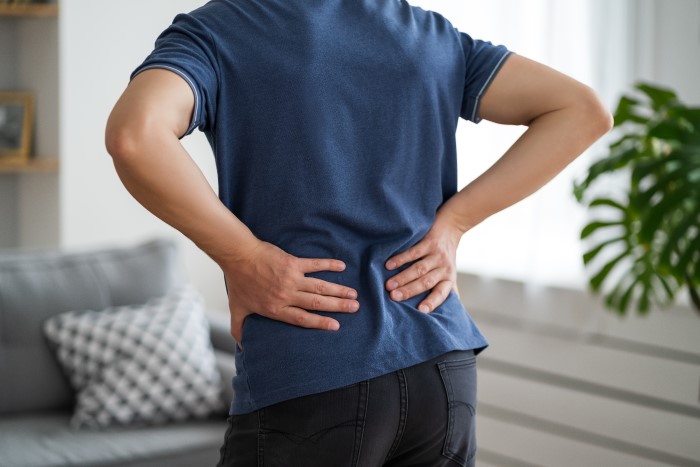
What Causes Lower Back Problems
Many people have suffered lower back problems at some time in their lives. Lower back problems can be quite painful and debilitating. The best way to prevent them is to know the causes and how to prevent them. So, here are some causes of lower back problems:
Too Much Bending or Twisting of the Spine
Most lower back problems are caused by too much bending or twisting of the spine, especially when the spine is being compressed. This causes uneven compression of the disks, which bulge and push against the spinal nerve and cause pain. It often happens to the disks near the L4, L5, and S1 vertebrae, which form a focal point for the stresses on the spine.
You can prevent this by keeping your back straight (neutral spine), especially when holding something heavy. However many activities and conditions make it difficult to keep your back straight and create uneven compression of the disks.
Tight Hamstrings
The hamstrings connect to the pelvis (hip bone) and to the bones below the knee. One of their functions is to extend the hip joint (such as standing from a seated position). If they are inflexible, it will be more difficult to bend at the hip. So, people often bend their spines to compensate for this.
This is a problem when picking up things off the floor. It is also a problem for people who spend a lot of time bent over (such as gardeners and roofers).
Prevent this problem by stretching your hamstrings regularly.
Lack of Leg Strength
Keeping your back straight (neutral spine) while picking up something means using your legs to lift. If your legs don't have the strength, you might subconsciously use your back to lift. If you do, you can unevenly compress your spinal disks.
Do exercises to strengthen your legs. Focus on pressing exercises such as leg presses and lunges.
Tight Hip Flexors
As their name shows, the hip flexors flex the hip joint (such as raising the knees). Some of the hip flexors (the psoas) attach to the spine. Tight hip flexors make it difficult to straighten the hip joint. Also, tight psoas can pull on the spine and hyperextend it if you straighten your hip joint. This is a problem for people who spend a lot of time reaching over their heads.
Prevent this by stretching your hip flexors.
Weak Abs and Bad Posture
When you pull in your midsection, your deep abdominal muscles increase the inner abdominal pressure which pushes up on your diaphragm. This reduces the compression load on your lumbar spine.
But if you have weak abs or you slouch, you won't get this benefit. Slouching will cause your spine to bear the full weight, and it will be uneven. This problem is worse if you are lifting a heavy weight.
Protect your lower back by doing exercises to keep your abs strong. Also, use good posture and keep your stomach pulled in.
Weak Spinal Erectors and Psoas
The spinal erectors help to keep your back straight when you are picking up heavy objects. They also prevent your hamstrings from excessively flexing your spine. Also, the psoas help the spinal erectors in this regard. Weak spinal erectors and psoas won't do this very well.
Use exercises like lower back extensions to strengthen your spinal erectors. Also, exercises like knee raises can keep your psoas strong.
Many factors can cause lower back problems, and combining them will increase the risk. However, there are also many things that we can do to reduce the risk. Although we can never completely eliminate the risk of lower back problems, a good strength and flexibility program can reduce the risk.
Other articles